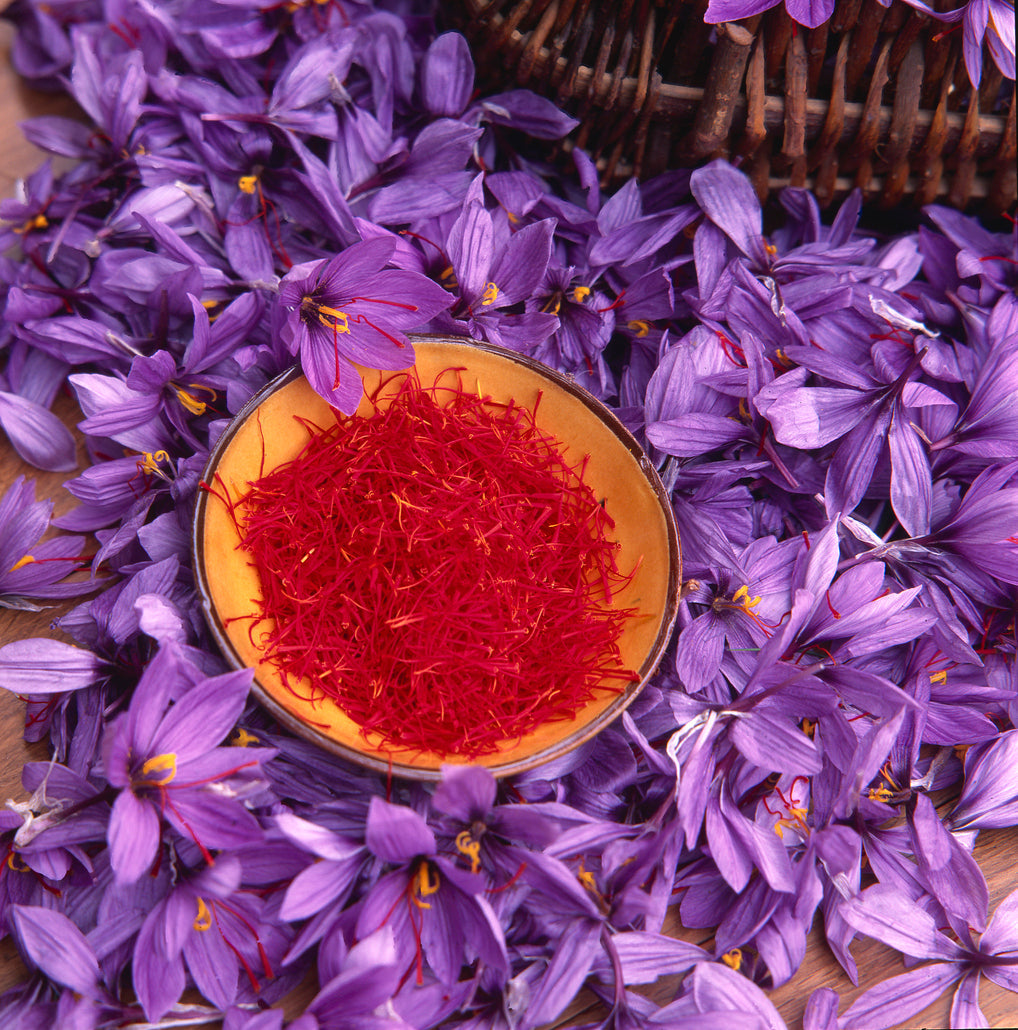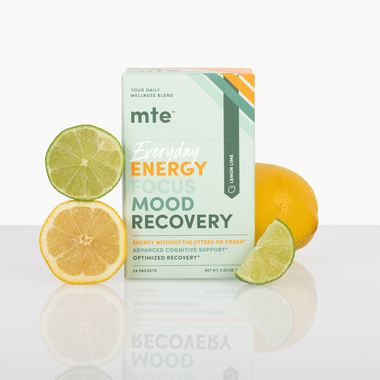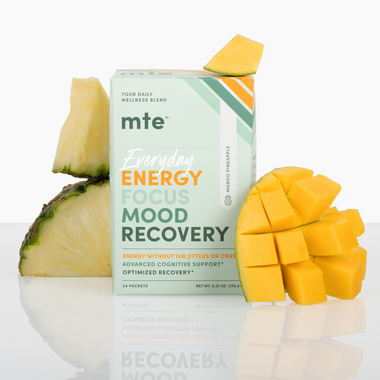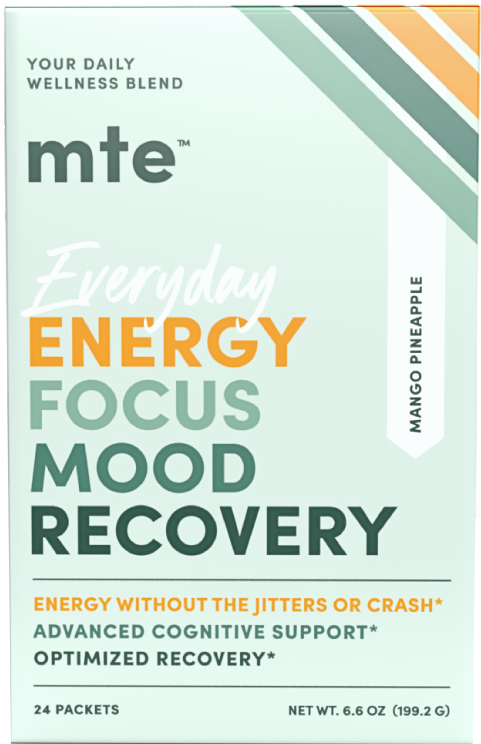
Adaptogens: A New Name for Some Very Old Medicinal Herbs
As our culture pivots towards more natural remedies to maladies traditionally treated with pharmaceuticals, IVs, and surgical procedures, the concept of wellness is becoming about more than just healthy vital stats.
Holistic health and a sustainable quality of life are becoming a collective priority, which has led clinical medicine to begin to see homeopathic medicine and adaptogenic herb blends as more than just the village mystic. In fact, Western medicine is slowly learning that it has never been the smartest person in the room. These buzz words we see in wellness drinks and productivity supplements — like “nervous system regulation” or “biohacking” — aren’t new developments in wellness; they’re modern language for millennias-old practices. Enter: adaptogens.
Nature has offered us no shortage of solutions to mood, stress, immunity, and performance. The World Wildlife Fund suggests that there are somewhere between 50,000 and 80,000 plant species used for medicinal purposes worldwide. However, there are only nine well-documented adaptogens, which makes them the rarest class of all medicinal plants. While many other plants are known to demonstrate adaptogenic benefits, they haven’t been as extensively studied, so we’ll stick to the 9 we’re sure about.
Adaptogens are thought to act on the body’s stress response system to help us better adapt to stress. These bioactive plants, along with a complementary, more common group called nootropics, are what clinical medical research is counting on for the future of a more nature-sourced approach to mainstream medicine.
What Makes a Plant an Adaptogen?
Adaptogens are a class of plants that are said to boost overall resistance to stressors – both environmental and internal. History, use, and research suggest adaptogens work in a non-specific way to help the body adapt to and overcome adverse situations, whether it’s distress, fatigue, brain fog, poor physical condition, etc.
Ginseng, ashwagandha, rhodiola rosea, and maca root are some of the most well-known adaptogens. On differing levels of clinical research, trdaitional pharmacology, and real-life application, each has a body of support for its beneficial effects on stress resilience and quality of life.
The term “adaptogen” didn’t appear in academic literature until 1947, when a Russian scientist used it to describe compounds that boost the “state of non-specific resistance” to stress. By the 1980s, researchers had discovered that adaptogens boost the body’s resistance not only to physical stress, but also chemical and biological damage, which greatly increased possible applications of adaptogen drinks and performance supplements.
And the modern adaptogen movement was born.
How Long Have People Used Adaptogens?
Obviously we didn’t just happen upon nine new magical plants in the mid-20th century. Modern medicine is good, but it’s not that good, and we wouldn’t be surprised if Asclepius struck someone down for even thinking so. I mean, Asclepius was so good at healing people (even dead ones) that Zeus got scared and jealous and murdered him. Can modern medicine say that?
Losing the plot.
The first adaptogen use we know of is a specific adaptogen – ashwagandha – evidence of which dates from 5000-6000 YBP. Ashwagandha has been used in Indian and Chinese Ayurvedic medicine since people were writing in Sanskrit. In Sanskrit, the name means “smells of a horse.” This moniker was chosen because the root smells weird and because consuming ashwagandha was said to give you the power of a horse.
Ayurvedic medicine and Traditional Chinese Medicine use herbal pastes, tonics, teas, and other drinks. This subfield is referred to as Rasayana, which means “rejuvenator.” The immunity drinks were most often an adaptogenic mix of several herbs (we’d assume there are a few adaptogens and nootropics amongst the list), but ashwagandha offered such an array of medicinal uses that it was one of the few adaptogens used alone as its own herbal remedy.
China wasn’t far behind in discovering the potential of adaptogens. Around 5000-5600 YBP, expeditions into Siberia introduced reishi, an adaptogenic mushroom that was quickly hoarded by the royal family. It is also believed that around this time, emperor Huang Di made medicinal tonics with ginseng.
The earliest extant medical text we have is the Ebers Papyrus from Middle Kingdom Egypt, about 3600 YBP. It listed over 800 remedies for various ailments. The first official surviving pharmacopoeia we have comes from China; it was called the Huangdi Neijing and was written sometime between 2800 - 2300 YBP. From here, via medical and historical texts, you can almost watch the “roots” of adaptogens grow to reach cultures across multiple continents:
- Greece, 77 CE: Dioscorides writes De Materia Medica, which classifies 600 medically useful herbs, several adaptogens among them, including rhodiola and licorice. Yes, licorice. Gross, but true.
- China, 220 CE: The Traditional Chinese Medical Text, Shennong Herbal, lists 262 medicinal plants used in TCM, including ginseng and reishi.
- China, 495 CE: Shaolin monks use adaptogens to aid with meditation.
- Northwest Europe, Viking Period: Rhodiola is used to boost strength and endurance in war.
- Siberia, 1000 CE: The Khanty use the adaptogen chaga drink to detox the body and as a paste for sores.
- Russia, 1100 CE: Tsar Vladimir Monomakh claims regular consumption of an adaptogen drink cured his lip cancer.
Since textual evidence for the use of adaptogens in Middle Ages Europe isn’t really there, we assume these valuable medicinal herbs were forgotten along with a ton of other important stuff after the Dark Ages. It was a time of chaos and disease. Who knows.
Let’s jump to the 20th century.
The Modern History of Adaptogens
Research into adaptogens started in secret labs deep in the former Soviet Union in 1947 at the start of the Cold War Era. The goal was to identify medicines that could increase the strength and resistance of Soviet soldiers, including the early cosmonauts.
The first plant adaptogen they focused on was Asian ginseng (Panax ginseng), originally identified in Traditional Chinese Medicine thousands of years before. However, it was deemed too expensive to use among all members of the military force due to the overharvesting and overconsumption of both Asian and American ginseng.
The Russians did stumble upon a distant relative of the Panax ginsengs that offered similar benefits: Siberian ginseng, also referred to as eleuthero. While it is in a different botanical family and interacts with the body via different compounds,
Siberian ginseng drinks showed promising results, spurring the inception of clinical research on this ginseng-substitute as an adaptogen. In tandem, the search for synthetic compounds that could act like plant adaptogens began but would end in failure two decades later.
However, Siberian ginseng stayed on the scene, because it’s awesome. Russia, in its quest to replace hard-to-find true ginsengs, began clinical trials in the late ‘50s. By the late ‘70s, 3+ million Russians used Siberian ginseng supplements, including elite athletes preparing for the Olympics.
The struggle to identify synthetic adaptogenic compounds didn’t fail because the definition was too difficult. Rather, marrying the wisdom of traditional medicine and the complexity of nature was yet impossible. Perhaps the most well-understood adaptogenic herb is ashwagandha, which is known to act on the HPA axis to regulate stress, mood, and energy signaling. But exactly how it does that? Great question.
And that’s about it - another ancient mystery that always seems to elude us. Just like how we’re still working to decipher Minoan Linear A despite fully understanding Linear B. Or how no one even knows what happened to the Minoans. Or to the Mycenaeans for that matter! Maybe those Linear A tablets would tell us…
This article is starting to lean pretty Greek.
The reason adaptogenic mechanisms are now medically referred to as “non-specific” is because, while we made up cool names for adaptogenic, nootropic, and other bioactive compounds, we’re still not sure exactly how they help the body fight stress and perform better. We’re just pretty sure that they do because we keep finding evidence to suggest as much.
Adaptogens: Diamonds in the Rough of Medicinal Herbs
We’ve got all these old medical books with 300+ plants and herbs that offer health benefits, so why are there less than 10 known adaptogens? Because the definition of an adaptogen is among the most difficult to achieve, not only in terms of traditional medicine but in medicine altogether. To qualify as an adaptogen, the substance must:
- Be non-toxic and have no negative effects
- Produce a broad state of resistance to physical, emotional, and environmental stressors
- Have an overall balancing effect on the body, allowing it to restore normal physiologic functions that have been altered by stress
In a world where most medicines start with the word “anti“ (i.e. anti-biotics, anti-depressants, anti-hypertensives), adaptogens are the rare “pro-normalizers.” The reason there are only nine of them is that helping the body restore normalcy is more difficult to achieve than you may think.
Do you know how many systems are working together all the time just to help you breathe and move? It’s a lot easier to find bioactive compounds that stop one or two bad things, as opposed to compounds that regulate and promote proper systems functions so they don’t get messed up in the first place.
Western medicine is mitigation-based. Systems of traditional medicine, and specifically adaptogens, are about prevention and support. Which is kind of our whole thing, too.
How Do Adaptogens Work?
Research suggests that adaptogens improve the communication pathway between the two master control systems for stress:
(1) the group of brain structures directing stress-related neurochemical communication and
(2) the gland signaling system that triggers the release of stress-related hormones/neurotransmitters.
(That’s just a fancy way of saying that adaptogens enhance the cross-talk between the body/mind connection to resist the impact of stress.)
Nikolai Lazarav, who coined the term “adaptogen” in the ‘40s and officially published the term in the ’50s, was the first to explore this effect on the body clinically. His study on adaptogens was based on Selye’s Theory of Stress and General Adaptation Syndrome.
This theoretical body classifies the body’s stress response into three stages: alarm, resistance, and exhaustion. Adaptogens are thought to reduce alarm, support resistance, and resist exhaustion. Clinical trials on adaptogens like ashwagandha, maca, or eleuthero suggest they may have the ability to intervene in all three stress phases:
- Alarm: Lower activity in the brain’s stress adaptation axis. Also thought to lower the activity of the central nervous system, producing a calming effect without sedation.
- Resistance: Regulate stress responses by controlling levels of pro-stress chemicals and the adverse byproducts they create. This can reduce the effort of the immune system to manage the stress, freeing up more immunocompetent cells for fighting the actual stressor.
- Exhaustion: Optimize the body’s use of oxygen, improving VO2 Max and, in turn, promoting respiratory and muscle health. Anti-inflammatory effects have also been observed.
This all adds up to helping the body adapt to how it deals with stress. Instead of a figurative roller coaster of reaction, resistance, and fatigue, adaptogens help to produce a slightly heightened but plateaued response to the stressor. The idea is to keep more energy than what stress takes away while also bolstering those energy systems against the effects of physical, environmental, and mental stress.
Why Take Adaptogens for Overall Well-Being?
Stress has far-reaching effects on the body, and although the impact of stress has been clearly defined over the last 100 years, it is only now being identified as a major influence on overall long-term health. In fact, we now know the damage from chronic stress can literally shorten your life.
To put it simply – chronic stress increases inflammation, which is the hallmark of nearly every health complaint – from migraines to muscle pains to straight up liver failure. Since inflammation can make most things worse, adaptogens have the potential to make many things… well, better.
Stress doesn’t just make you angsty; both acute and chronic stress can:
- Raise the activity of the cardiovascular system to an unhealthy level, increasing blood pressure and heart rate while also raising levels of stress hormones.
- This leads to long-term vascular and heart damage, increasing the risk of heart attack and stroke.
- Start the snowball effect that is the endocrine system’s response to stress. The brain’s stress response axis signals the pituitary gland to secrete fight-or-flight hormones..
- Chronic above-baseline stress levels fatigue your immunocompetent cells, hampering your body’s response to bacteria and viruses, and slowing healing time from injuries.
- Change the balance of bacteria in your gastrointestinal system, which causes digestive issues, including bloating and difficulty swallowing food.
- It may also cause a lack of appetite or a propensity to binge eat, heartburn, acid reflux, constipation, diverticulitis, and makes you more susceptible to chronic low-grade GI infections.
- Keep your musculoskeletal system on guard (read: tense).
- This chronic tension can trigger stress disorders, chronic pain syndromes, and even autoimmune disorders.
- Put the respiratory system in alarm mode.
- This can cause shortness of breath, rapid breathing, airway constrictions, and even triggering asthma attacks in non-asthmatics.
- Affect how the central nervous system (CNS) responds to stress psychologically.
- Acute and chronic stress in early life can actually reshape neural pathways as the body creates new ways to compensate that are less than functional.
- Fatigue the autonomic nervous system (ANS), both the sympathetic and parasympathetic parts.
- Having the autonomic nervous system constantly overactive puts undue wear and tear on the body. The issue with your CNS and ANS being in a constant stress response is that it sends everything else in your body out of whack.
- Dysregulate hormone production and cycling.
- This can lower libido and reproductive capacity.
- Damage your DNA, specifically T-cells and cell telomeres.
- This causes cell death and increases the risk of cancer.
Scary, right? But that also means if taking a daily blend of adaptogenic herbs supports inner homeostasis and stress resilience, theoretically, it’s also protecting you from a veritable cornucopia of other health issues, some of which are potentially fatal.
How to Safely Incorporate Adaptogens in Your Daily Routine
Unlike conventional pharmaceutical therapies, which can have a laundry list of side effects and risks, adaptogens are known to be non-toxic and work best over time and with consistent use. This is because, since they act widely and systemically, adaptogen supplements need time and consistency to really move the needle in a healthy and sustainable way. No instant gratification here, sorry.
Medical literature seems to agree with traditional use, which describes adaptogens as ‘tonic’ in nature, acting to strengthen wellness and promote vitality with compounding effects over time. This is perhaps most evident in the plant adaptogen ashwagandha. The last several decades of clinical research suggest that ashwagandha may be the most impressive adaptogen available; it shows promise of improving several aspects of the human condition by its ability to regulate nervous system activity.
A daily ashwagandha wellness drink has the potential (and has been directly observed in studies!) to:
- Support thyroid health, normal weight, and metabolism
- Reduce the impact of stress and feelings of unease
- Fortify mood and mental energy
- Promote energy without causing a hangover effect
- Promote deep, restorative recovery at night
- Aid in cognitive performance and memory retention
- Sustain muscle mass, promote exercise performance and normal cardiovascular health
As they say, if it ain’t broke, don’t fix it. Six thousand years of applied wisdom suggest consuming daily adaptogen drinks containing herbs like Siberian ginseng and ashwagandha supports long-term health and overall wellness. Why not find an everyday green powder supplement that hones in on that millennia-old tradition?
*cough cough* Try MTE!
Other Well-Researched Adaptogens
Besides ashwagandha, what else do we have going on in the world of modern medical research on the potential of adaptogenic herbs? The list is short (remember, we only know of nine total) but most certainly impressive:
- American ginseng (Panax quinquefolius)
- Asian ginseng (Panax ginseng)
- Holy basil (Ocimum sanctum)
- Rhaponticum (Rhaponticum carthamoides)
- Rhodiola (Rhodiola rosea)
- Saffron (Crocus sativus)
- Schisandra (Schisandra chinensis)
- Siberian ginseng (Eleutherococcus senticosus)
Ginseng is always doing the most, isn’t it.
An interesting feature of adaptogens is that they each have their own specialty. For example, maca root — a double-threat superfood adaptogen — has been observed to reduce the physical effects of stress, including stress-induced ulcers. But it has also indicated potential to fortify immune function, promote peace of mind, and quell heightened emotional reactivity.
Similarly, saffron has been well-documented for its potential to reduce restlessness and unease but has also been shown to promote hormonal balance and short-term memory. Saffron is also always doing the most - it’s a nootropic for mood, a superfood for immunity, and has these adaptogenic qualities, too.
These two examples complement the benefits of Siberian ginseng, which is used worldwide to promote muscle development, exercise performance, and oxygen levels. These non-specific but overlapping effects make adaptogen stacks the way to go, as you can blend several adaptogenic herbs. Cover all your bases, if you will.
Although adaptogens are rare in botanical medicine, their medicinal qualities seem to be myriad. In fact, some of the most exciting fields of medical research today involve adaptogens. And with each newly published study comes an addition to their list of observed health benefits.
Regain Balance With an Adaptogenic Herb Blend
Adaptogens have been essential to traditional medicine for thousands of years, celebrated for their ability to help the body adapt to stress and maintain balance. These plants support resilience, boost energy, and promote long-term wellness. Given their long history of safety and counterbalancing effects on stress, try a daily adaptogen drink that combines nootropic energy, adaptogens, and superfoods, culminating in a comprehensive wellness supplement that boosts mood, recovery, energy, and focus? One you can actually feel working?
You can do that with MTE. Our wellness powder is packed with carefully selected adaptogens like ashwagandha, maca, and eleuthero that support stress management, boost energy and focus, and enhance mood naturally.
Try MTE — the feel-good drink — and embrace the time-tested power of adaptogenic herbs for a healthier, more balanced life.






